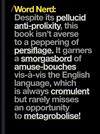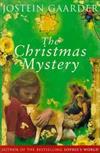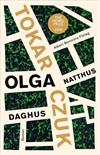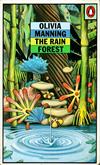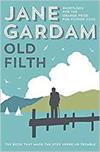
Motherkind
Registered by LittleBigDave of Selby, North Yorkshire United Kingdom on 10/26/2008
 This Book is Currently in the Wild!
This Book is Currently in the Wild!
 This Book is Currently in the Wild!
This Book is Currently in the Wild!
1 journaler for this copy...
Journal Entry 1 by LittleBigDave from Selby, North Yorkshire United Kingdom on Sunday, October 26, 2008
The title of the novel MotherKind has suggestions of essentialist ideas. The title could suggest that mothers are a race of their own; mothers are something outside of man kind and even outside of human kind. The title could also indicate mothers being perceived as other. When approaching the title with an essentialist view it seems to be suggesting women are specifically designed to create life and become mothers, therefore MotherKind represents a group of individuals separate to men and even separate to women who are not mothers, who all have the experience of becoming a mother in common with each other.
Whilst biological essentialism deemed men physically superior, women were seen as being morally superior. This idea is evident when looking at the relationship between Kate and her mother, Kate and her father and Kate’s brothers and her father. The relationship between Waylon and Katherine appeared to be that of a typical 1950’s married couple. Even though Katherine was the major financial provider for the family, the two seemed to fit into their normative masculine and feminine roles. Waylon was physically strong, solemn and set in his ways: “[m]en were men and women were women, work was paid and leisure was not.” (Phillips 2001 pg186)
In contrast Katherine adopts the more ‘essential’ female traits such as traditional family values, passivity and a sense of domesticity: “[h]er mother would have wanted communication, intimacy, shadings and distinctions, even stories. But maybe she didn’t much expect them from a man like Waylon. He didn’t hold with yakking, to use one of his expressions.” (Phillips 2001 pg185)
Looking at the difference between Kate’s mother and father it is evident why the relationships between each parent and their child may differ dramatically. Not much is mentioned regarding the father son relationship between Waylon and Kate’s brothers. However, the difference in the way each parent treated the children is documented on through Kate’s memory:“[a] couple of times she remembered seeing him cuff her brothers with the flat of his hand, quick whaps to the back of the head that conveyed more insult than physical damage.” (Phillips 2001 pg185) Consequently it appears the father son relationship is one based on physical strength and excerption of authority. This contrasts the relationship between the children and the mother figure which was centred more on controlled verbal discipline and the attempt to educate the children to learn from their mistakes as apposed to the impulsive and aggressive discipline of their father: “He left the discipline to Katherine. She administered whatever spankings they received and never in anger. She talked to them first, then they had to bend over her lap, which Kate found far more humiliating than being struck.” (Phillips 2001 pg185)
The relationship between Kate and her parents is complex. Katherine and Waylon appear very different yet they are also interdependent within that difference. Kate defines herself against the differences she sees between herself and her parents. However, as the novel develops the differences seem to manifest themselves in Kate. Kate notices the changes within herself when she becomes a mother. As well as realising similarities between herself and her mother, she also recognises the differences she saw in her father as a child, become evident in herself as an adult: “[m]y father lives in the unspoken, she’d told Matt, and when I’m with him I live there too.” (Phillips 2001 pg181)
It appears Kate is attempting to redefine herself by trying to recreate the domestic situation her parents lost: “Kate and her mother sat at the kitchen table while Kate made the salad, the men’s voices murmured outside. Wasn’t it strange? They were like a little family.” (Phillips 2001 pg189)
Throughout the novels inception, Kate and her mother appear to be set as oppositions to each other, their attitudes and beliefs differ greatly and whilst Katherine appears traditional, domesticated and at times reliant on others; Kate adopts a much more liberal out look regarding the roles of women. However, given the initial antithesis created between the two characters, as Katherine’s illness progresses the two seem to become evermore alike in their essentials. At certain points in the novel it appears Katherine is entering into Kate’s psyche, this could be due to the fact Katherine’s presence is felt so strongly throughout the house. An example of this can be seen on pages 55-56. Kate has always been determined to leave the town she grew up in; she is a keen, independent traveller, however, when in the presence of Katherine she appears to absorb Katherine’s values and longs to be back in her home town again: “but maybe I’ll regress back to my roots. You always said it would happen…you never left home, so you couldn’t tell me how it would feel to go. When I think of a place, I think of here. I’m from this place, no matter where I am.” (Phillips 2001 pg55-56)
However much the novel initially appears to highlight difference, it inevitably ends up stressing the comparison between mother and daughter. After the birth of her son, Kate appears far more domesticated and is often found in the kitchen similarly to her mother. She adopts the role of chief caretaker, a role her mother once employed. Even though Kate did not believe in rushing into marriage, she still desired marriage as she placed vast importance on the nuclear family unit.
Katherine also shows signs of breaking away from her normative female role as she divorces from her husband after years of feeling trapped. After her divorce she leads an independent life and feels liberated by her divorce. Katherine finds the strength to fight her illness and promises to see Kate’s baby. This is a promise she far succeeds as she not only sees the baby, she helps to care for Kate when she is suffering from mastitis. Another major difference noticeably throughout the novel is the difference between the women which enter into Kate and Katherine’s life. However different the female characters seem, they all appear to have some quality within them which either Kate or Katherine can relate to.
The character of Amy is also a prevalent one within Kate and Katherine’s life. Kate develops a strong bond with Amy and at times becomes reliant on her. The fact is never actually established, why the bond is so strong between the two. Amy observes Kate at her rawest, she experiences Kate’s experiences and helps her cope with the life changing event of motherhood. However, it could be that Amy reminds Kate of her mother. Amy remains traditional in her views and just like Katherine, the illness of a family member determined her fate for her she admitted: “[s]he was old fashioned and someday she’d have a diamond …She was a caretaker, not an explorer. Fate had explored for her, without so much as a by-your- leave. That was how women would put it in the town Kate was born, where Katherine had been a child, high school girl, bride.” (Phillips 2001 pg159) By having the familiarity of someone who was in a similar situation Katherine was in when she was younger, may be of great comfort to Kate and by investing in Amy she may have been preparing for the time her mother will be taken away from her, in a sense replacing Katherine’s values in somebody who could carry them on.
Kate also defines the relationship with her mother, against the relationship between Katherine and her mother. Kate seems to feel the bond between her and Katherine is not as strong as that of Katherine and her mother: “[y]ou were so close, almost like sisters”. Katherine denies this; she holds her traditional values by assuring Kate close relationships between women come naturally: “[s]he confided in me, yes, but that’s natural between women”. (Phillips 2001 pg53) It may be that up until the ending chapters of the novel, Kate doesn’t realise the ability she has to form close interdependent relationships with other women, especially with her mother.
The character of Moira within MotherKind also serves to highlight the nature of interdependence within difference. The passages on pg 37-38 draw attention to the trust and intimacy Kate places in Moira. Kate feels she has nothing to hide and trusts Moira simply because she is a woman: “[t]hen the sheets and blankets were a silky covering. Moira moved her hands along Kate’s form as though to gain some innate sense of her, pausing, exerting a gentle pressure. It’s not new age, Kate thought, it’s from the oldest days, when floors were swept earth. Behind the music she heard Moira breathing, exhaling in time to the movement of her hands, as though she were draining Kate of fatigue or discomfort, releasing it through herself. Surely that was the idea.” (Phillips 2001 pg38) The relationship between the two women is taken back to basics. Taken back to a time before medicine and doctors, the passage highlights women’s need for other women. It suggests women being cured through other women and not through the intervention of medicine or men, the two factors Kate’s partner Matt represents.
Whilst biological essentialism deemed men physically superior, women were seen as being morally superior. This idea is evident when looking at the relationship between Kate and her mother, Kate and her father and Kate’s brothers and her father. The relationship between Waylon and Katherine appeared to be that of a typical 1950’s married couple. Even though Katherine was the major financial provider for the family, the two seemed to fit into their normative masculine and feminine roles. Waylon was physically strong, solemn and set in his ways: “[m]en were men and women were women, work was paid and leisure was not.” (Phillips 2001 pg186)
In contrast Katherine adopts the more ‘essential’ female traits such as traditional family values, passivity and a sense of domesticity: “[h]er mother would have wanted communication, intimacy, shadings and distinctions, even stories. But maybe she didn’t much expect them from a man like Waylon. He didn’t hold with yakking, to use one of his expressions.” (Phillips 2001 pg185)
Looking at the difference between Kate’s mother and father it is evident why the relationships between each parent and their child may differ dramatically. Not much is mentioned regarding the father son relationship between Waylon and Kate’s brothers. However, the difference in the way each parent treated the children is documented on through Kate’s memory:“[a] couple of times she remembered seeing him cuff her brothers with the flat of his hand, quick whaps to the back of the head that conveyed more insult than physical damage.” (Phillips 2001 pg185) Consequently it appears the father son relationship is one based on physical strength and excerption of authority. This contrasts the relationship between the children and the mother figure which was centred more on controlled verbal discipline and the attempt to educate the children to learn from their mistakes as apposed to the impulsive and aggressive discipline of their father: “He left the discipline to Katherine. She administered whatever spankings they received and never in anger. She talked to them first, then they had to bend over her lap, which Kate found far more humiliating than being struck.” (Phillips 2001 pg185)
The relationship between Kate and her parents is complex. Katherine and Waylon appear very different yet they are also interdependent within that difference. Kate defines herself against the differences she sees between herself and her parents. However, as the novel develops the differences seem to manifest themselves in Kate. Kate notices the changes within herself when she becomes a mother. As well as realising similarities between herself and her mother, she also recognises the differences she saw in her father as a child, become evident in herself as an adult: “[m]y father lives in the unspoken, she’d told Matt, and when I’m with him I live there too.” (Phillips 2001 pg181)
It appears Kate is attempting to redefine herself by trying to recreate the domestic situation her parents lost: “Kate and her mother sat at the kitchen table while Kate made the salad, the men’s voices murmured outside. Wasn’t it strange? They were like a little family.” (Phillips 2001 pg189)
Throughout the novels inception, Kate and her mother appear to be set as oppositions to each other, their attitudes and beliefs differ greatly and whilst Katherine appears traditional, domesticated and at times reliant on others; Kate adopts a much more liberal out look regarding the roles of women. However, given the initial antithesis created between the two characters, as Katherine’s illness progresses the two seem to become evermore alike in their essentials. At certain points in the novel it appears Katherine is entering into Kate’s psyche, this could be due to the fact Katherine’s presence is felt so strongly throughout the house. An example of this can be seen on pages 55-56. Kate has always been determined to leave the town she grew up in; she is a keen, independent traveller, however, when in the presence of Katherine she appears to absorb Katherine’s values and longs to be back in her home town again: “but maybe I’ll regress back to my roots. You always said it would happen…you never left home, so you couldn’t tell me how it would feel to go. When I think of a place, I think of here. I’m from this place, no matter where I am.” (Phillips 2001 pg55-56)
However much the novel initially appears to highlight difference, it inevitably ends up stressing the comparison between mother and daughter. After the birth of her son, Kate appears far more domesticated and is often found in the kitchen similarly to her mother. She adopts the role of chief caretaker, a role her mother once employed. Even though Kate did not believe in rushing into marriage, she still desired marriage as she placed vast importance on the nuclear family unit.
Katherine also shows signs of breaking away from her normative female role as she divorces from her husband after years of feeling trapped. After her divorce she leads an independent life and feels liberated by her divorce. Katherine finds the strength to fight her illness and promises to see Kate’s baby. This is a promise she far succeeds as she not only sees the baby, she helps to care for Kate when she is suffering from mastitis. Another major difference noticeably throughout the novel is the difference between the women which enter into Kate and Katherine’s life. However different the female characters seem, they all appear to have some quality within them which either Kate or Katherine can relate to.
The character of Amy is also a prevalent one within Kate and Katherine’s life. Kate develops a strong bond with Amy and at times becomes reliant on her. The fact is never actually established, why the bond is so strong between the two. Amy observes Kate at her rawest, she experiences Kate’s experiences and helps her cope with the life changing event of motherhood. However, it could be that Amy reminds Kate of her mother. Amy remains traditional in her views and just like Katherine, the illness of a family member determined her fate for her she admitted: “[s]he was old fashioned and someday she’d have a diamond …She was a caretaker, not an explorer. Fate had explored for her, without so much as a by-your- leave. That was how women would put it in the town Kate was born, where Katherine had been a child, high school girl, bride.” (Phillips 2001 pg159) By having the familiarity of someone who was in a similar situation Katherine was in when she was younger, may be of great comfort to Kate and by investing in Amy she may have been preparing for the time her mother will be taken away from her, in a sense replacing Katherine’s values in somebody who could carry them on.
Kate also defines the relationship with her mother, against the relationship between Katherine and her mother. Kate seems to feel the bond between her and Katherine is not as strong as that of Katherine and her mother: “[y]ou were so close, almost like sisters”. Katherine denies this; she holds her traditional values by assuring Kate close relationships between women come naturally: “[s]he confided in me, yes, but that’s natural between women”. (Phillips 2001 pg53) It may be that up until the ending chapters of the novel, Kate doesn’t realise the ability she has to form close interdependent relationships with other women, especially with her mother.
The character of Moira within MotherKind also serves to highlight the nature of interdependence within difference. The passages on pg 37-38 draw attention to the trust and intimacy Kate places in Moira. Kate feels she has nothing to hide and trusts Moira simply because she is a woman: “[t]hen the sheets and blankets were a silky covering. Moira moved her hands along Kate’s form as though to gain some innate sense of her, pausing, exerting a gentle pressure. It’s not new age, Kate thought, it’s from the oldest days, when floors were swept earth. Behind the music she heard Moira breathing, exhaling in time to the movement of her hands, as though she were draining Kate of fatigue or discomfort, releasing it through herself. Surely that was the idea.” (Phillips 2001 pg38) The relationship between the two women is taken back to basics. Taken back to a time before medicine and doctors, the passage highlights women’s need for other women. It suggests women being cured through other women and not through the intervention of medicine or men, the two factors Kate’s partner Matt represents.
Journal Entry 2 by LittleBigDave at In a bicycle/scooter basket outside a shop in Ormskirk, Lancashire United Kingdom on Wednesday, November 19, 2008
Released 15 yrs ago (11/19/2008 UTC) at In a bicycle/scooter basket outside a shop in Ormskirk, Lancashire United Kingdom
WILD RELEASE NOTES:
WILD RELEASE NOTES:
In someone's mobility scooter outside Tesco! :P Lol...
In someone's mobility scooter outside Tesco! :P Lol...




